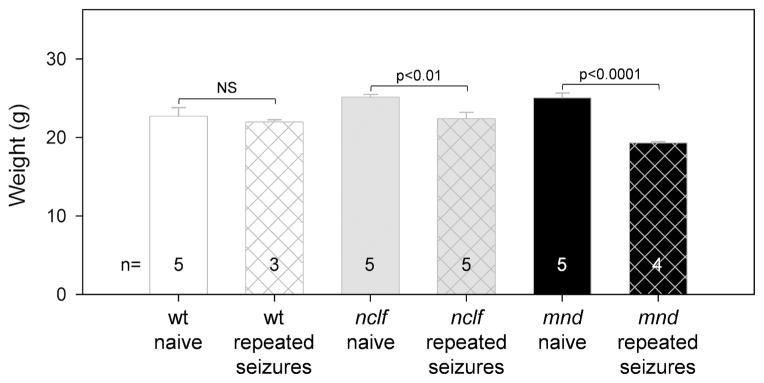Figure 3.

Repeated flurothyl-induced seizure activity inhibits the growth of nclf and mnd mice. Wild-type, nclf, and mnd mice at 21 days to 24 days of age underwent kindling (seizure induction by flurothyl once a day for 8 consecutive days) and subsequent retesting (seizure induction by flurothyl once a week for 4 weeks). After the last retesting (at 57 days to 60 days of age), the mice were weighed. Age-matched naïve (no seizure induction), same-strain control mice also were weighed. Columns and bars represent mean ± standard error of the mean (n = 3–5). Repeated seizure activity significantly decreased the total body weight of nclf and mnd mice when compared with naïve same-strain controls (P < .01 for nclf and P < .001 for mnd by unpaired t test). Wild-type animals showed normal growth despite repeated seizure activity (NS: not significant by unpaired t test).
